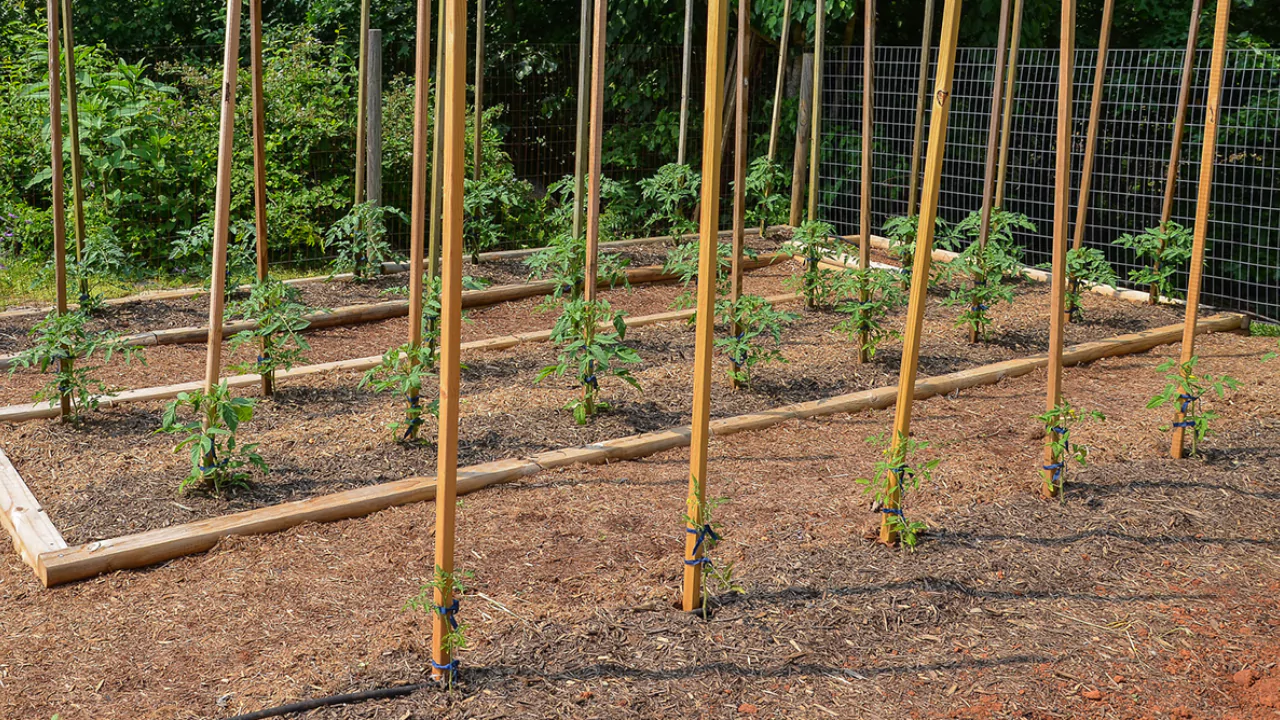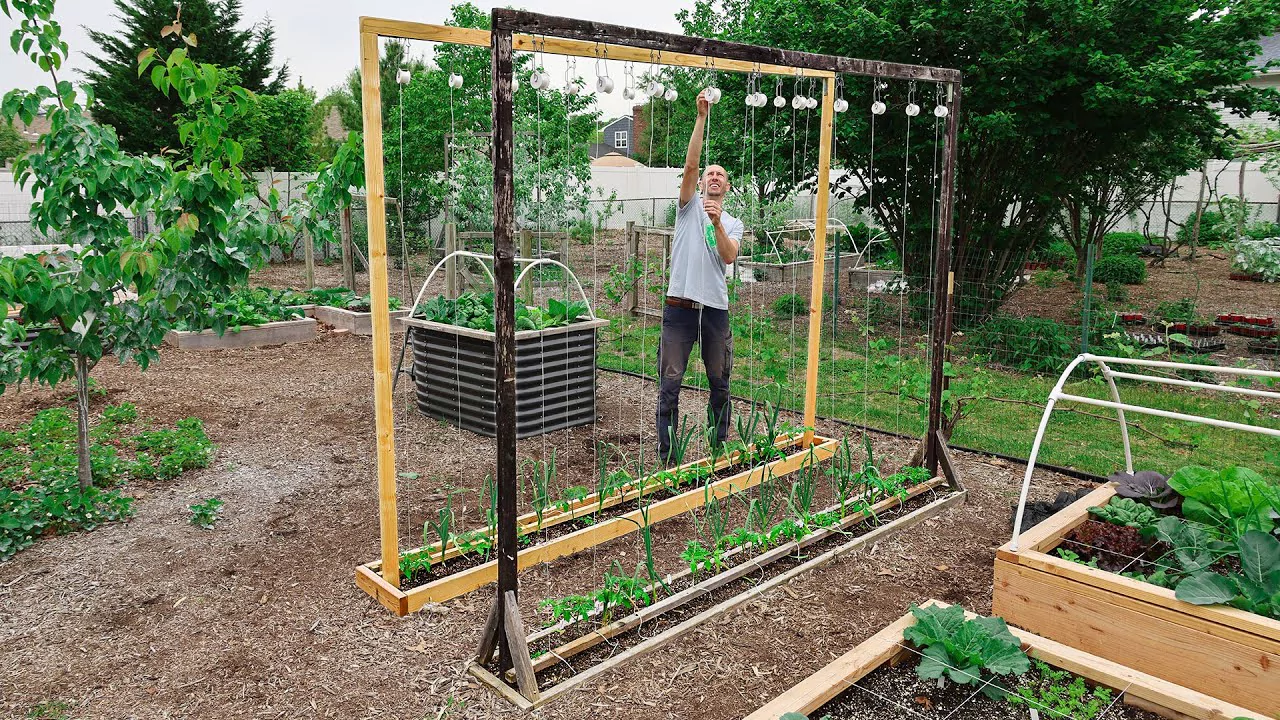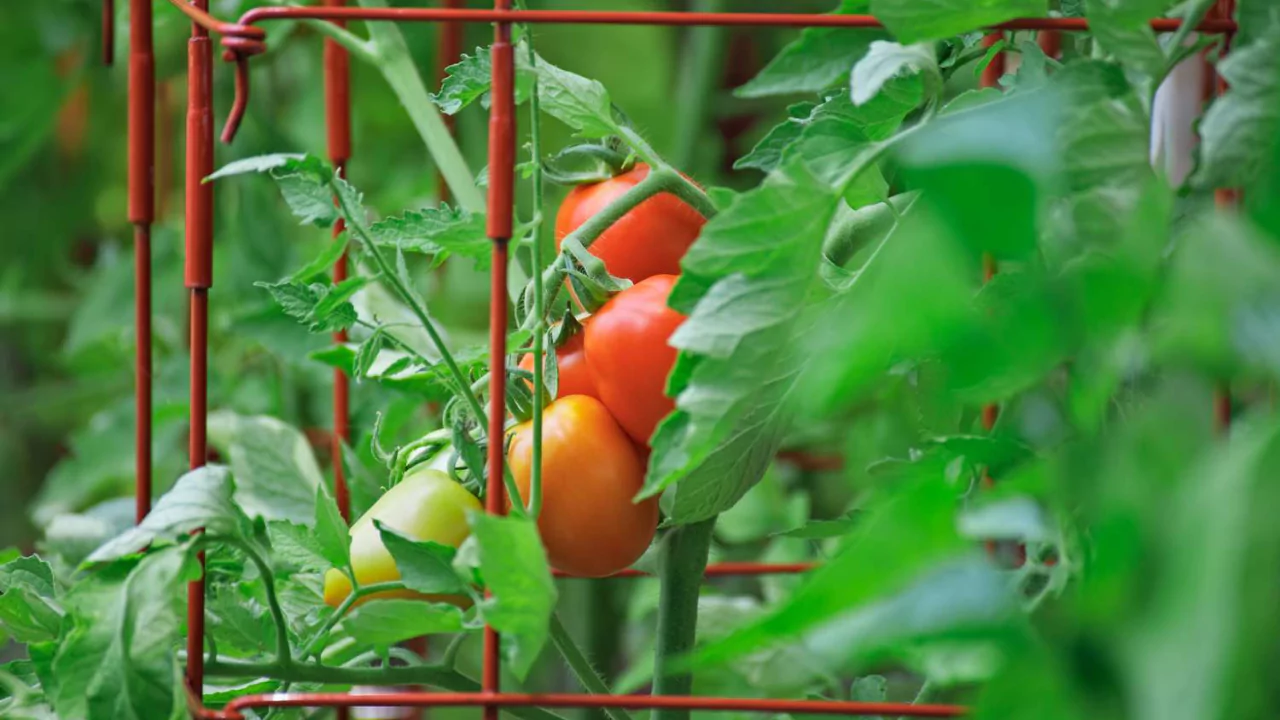
Staking is an essential requirement if you cultivate tomatoes in your home garden.
The majority of tomatoes require some form of support. This is due to certain varieties growing tall—unlike self climbing cucumbers, tomato plants both determinate and indeterminate cannot support themselves.
Every endeavor comes with its challenges; however, the supports for tomatoes do come with some advantages as well.
To start, having supports will make your crops more stable and also Staking tomatoes:
- Prevents crops from touching the ground, improves airflow to ensure the plants remain healthy and aids in avoiding fruit rotting.
- Enhances spatial utility in the garden.
- Provides easy access to the crops for harvesting.
With this information, you have an understanding of how effortless this can make your life. The next step is learning how to stake tomato plants.
Homemade tomato stakes are exceptionally simple to make, so take a moment and show your tomatoes some love.
Tomato Stakes vs. Tomato Cages vs. Trellises: What’s Best to Use?
Before we proceed with the instruction on crafting a simple stake, let’s have a look at some of the other supporting structures.
So what’s better for tomatoes: staking, trellising, or caging?
Here is a breakdown of the pros and cons while attempting to clear the confusion.
Staking

This is one of the best ways to provide a support structure for your tomatoes. So, how do tomato stakes work?
It involves driving a stake into the ground and fastening the plant to it.
This method is super simple in the beginning, but it becomes more complex later on. As the tomato plant grows, you need to restrain it to the stake by letting it grow a single main stem and pruning the side branches.
Pros:
- A staked plant will give larger fruit that ripens faster.
- Many tomatoes can be planted in a single row.
- Perfect for small spaces since they can be grown in pots and containers.
Cons:
- You must restrain and monitor the plants as they grow.
- For best results, tomato suckers must be pruned regularly.
- Pruning negatively impacts your harvest because the staked branches are fewer.Pruning reduces your harvest as the plant is left with fewer branches.
Trellising

With trellising systems you attach an individual tomato plant to a vertical support structure made of T-posts, stakes, and twine. As the plant develops, you tie the sprawling vines to support the heavy branches that grow vertically.
Pruning is mandatory with both trellising and staking.
Pros:
- The plant will get more sunlight, which results in a faster ripening period of one to two weeks.
- Harvesting becomes effortless since the plant can be accessed from all angles.
- Works as an excellent support for tomatoes.
Cons:
- Only applicable for indeterminate tomato plants.
- Sunscald may occur due to insufficient foliar cover.
- Time-consuming in the initial stages due to training, pruning, and tying the vines.
Caging

Creating a cage for tomatoes may not be as easy as creating a stake, though it is achievable.
To make a homemade tomato cage you need concrete reinforcement wire mesh and zip ties. A stake can also be added for extra support to the tomato cage so that it keeps its position when vines become heavy.
With the vine supported by a tomato cage, heavy pruning is not needed. Only four or five main fruiting branches need to be kept.
Pros:
- Earlier in the season, the fruit will not ripen as quickly, however, you will receive more fruits that are less susceptible to cracking and sunburn.
- You do not have to fully tie up a tomato plant, and only moderate pruning is required.
- Some training is needed for the plants but is much easier. Just guide the ends of the branches back into the cage, and that is all there is to it.
Cons:
- Harvesting may be more difficult as the tomato cages can be obstructive.
- Your tomato cage will tip over without an additional stake to hold it in place.
- The cages take up more room, which makes them unsuitable for small gardens.
How to Build a Strong Tomato Stake: A Step By Step Guide
Now you can make an informed choice and determine if staking is beneficial for your garden. If so, get to work.
This is the easier part, so trust us on this one.
To effectively stake tomatoes, ensure that they are well anchored so they will not be able to topple down during storms or windy weather.
After deciding what variety of tomatoes to grow, select the appropriate stake size. You want to avoid letting tomatoes outgrow the stakes.
- If you’re cultivating shorter, determinate tomato varieties, keep them between 3 to 4 feet tall.
- To support higher, indeterminate cultivars, you will need stakes that are between 5 to 6 feet tall.
- This is also true for heirloom tomatoes which may grow to 8 to 10 feet in height.
Check the seed packet to make sure you hit the right variety.
Let’s now explore the process for constructing the best possible support system for your tomatoes..
Step #1
To provide proper support for tomatoes, you can use either wooden or metal stakes, driving them deep enough into the ground to ensure stability. More affordable options include garden canes, bamboo poles, or even rebar.
It is best to place the stakes immediately after the seedlings are planted to avoid disrupting root systems.
Step #2
Position each stake 3 to 4 inches away from the base of the plant, opposite the first bloom cluster. This will prevent the fruit from being trapped between the stake and the tomato stems.
Step #3
As the tomato vines grow, remember to tie them to the stakes using garden twine, nursery tape, or small fabric strips.
Aim to secure the plant in a way that is not too loose or too tight. While the plant requires some freedom to prevent injury, too much slack will permit movement and ultimately damage the plant.
Tying the slip just below the fruit cluster risks the stems being forced to break due to the weight of maturing fruit. So, be careful.Image courtesy
Step #4
Continue with the tomato plantation. Continue fastening their growing stems to the stakes until they reach maturity, ensuring you do so every 18-24 inches.
Provide the Right Support for Your Tomatoes
It is typically a great idea to support tomatoes.
It is entirely your decision what you will use to support your tomatoes – be it cages, stakes or trellises.
The suggestions provided above will enable a positive approach towards growing tomatoes within the garden. The different methods to stake tomatoes allows flexibility with plant varieties. This flexibility enables you to adjust the outputs and inputs for work and goals.
If the traditional staking method suits you, then just follow the steps above.